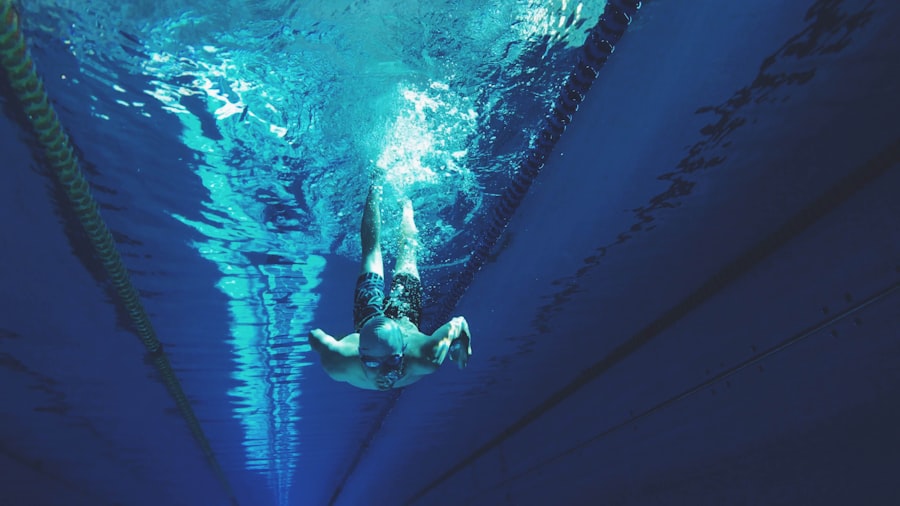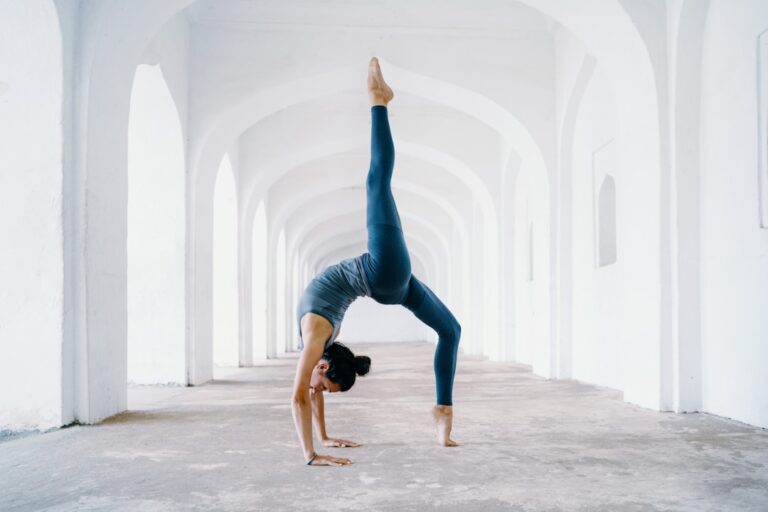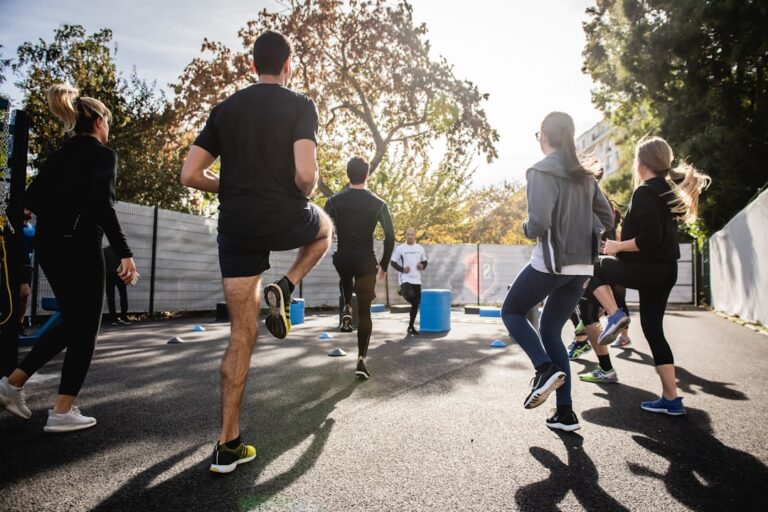Aquatic fitness, also referred to as water exercise or water aerobics, is a type of physical activity conducted in aquatic environments. This form of exercise has become increasingly popular due to its low-impact nature and wide range of health benefits. Participants can engage in aquatic fitness in various settings, including swimming pools, lakes, and oceans.
The versatility of water-based exercises makes them accessible to individuals of all ages and fitness levels, promoting inclusivity in physical activity. Aquatic fitness programs can be tailored to address specific goals, such as improving cardiovascular health, increasing muscular strength, enhancing flexibility, or providing a refreshing and enjoyable workout experience. The buoyancy of water reduces stress on joints and muscles, making it an ideal exercise option for those with mobility issues or recovering from injuries.
Additionally, the resistance provided by water can intensify workouts, leading to improved overall fitness and body composition.
Key Takeaways
- Aquatic fitness is a form of exercise that takes place in water, offering a low-impact and effective workout.
- Exercising in water provides numerous benefits, including increased resistance, reduced impact on joints, and improved cardiovascular health.
- Types of aquatic workouts offered include water aerobics, aqua cycling, and water yoga, catering to a variety of fitness levels and goals.
- Aquatic exercise can improve overall health by increasing muscle strength, flexibility, and endurance, as well as promoting relaxation and stress reduction.
- To get the most out of your aquatic workout, it’s important to stay hydrated, use proper form, and listen to your body’s cues for rest and recovery.
Benefits of Exercising in Water
Reduced Impact and Increased Strength
The buoyancy of water reduces the impact on joints and muscles, making it an ideal form of exercise for individuals with arthritis, joint pain, or other musculoskeletal conditions. Additionally, the resistance provided by the water helps to build strength and endurance without putting excessive strain on the body.
Rehabilitation and Injury Prevention
This makes aquatic fitness a great option for rehabilitation and injury prevention. Furthermore, the natural cooling effect of water helps to regulate body temperature during exercise, preventing overheating and allowing for longer, more comfortable workouts. Finally, the hydrostatic pressure of water can help to improve circulation and reduce swelling, making it beneficial for individuals with circulatory issues or edema.
Mental and Emotional Benefits
In addition to the physical benefits, exercising in water also offers mental and emotional advantages. The soothing and calming nature of water can help to reduce stress and anxiety, promoting a sense of relaxation and well-being. The social aspect of aquatic fitness classes can also provide a sense of community and support, leading to improved mental health and overall quality of life.
Types of Aquatic Workouts Offered

There are various types of aquatic workouts offered to cater to different fitness goals and preferences. Water aerobics classes typically involve a combination of cardiovascular exercises, strength training, and flexibility movements performed in the water. These classes are often set to music and led by an instructor, making them both fun and effective.
Aqua cycling, also known as water spinning, is another popular option that involves stationary cycling in the water. This high-intensity workout provides a challenging cardiovascular workout while minimizing impact on the joints. For those looking to improve their flexibility and balance, aquatic yoga and Pilates classes are available, offering a unique and refreshing take on these traditional practices.
Water walking or jogging is a great option for individuals looking to improve their cardiovascular fitness without the impact of land-based activities. Finally, aquatic therapy sessions are available for individuals with specific rehabilitation needs, providing personalized exercises to aid in recovery from injury or surgery.
How Aquatic Exercise Can Improve Overall Health
| Benefit | Explanation |
|---|---|
| Low Impact | Aquatic exercise is gentle on the joints, making it suitable for people with arthritis or joint pain. |
| Cardiovascular Health | Water resistance helps to improve cardiovascular fitness and endurance. |
| Muscle Strength | Water provides resistance for muscle strengthening and toning. |
| Flexibility | Water allows for a wider range of motion, improving flexibility. |
| Stress Reduction | Being in water can have a calming effect, reducing stress and anxiety. |
Aquatic exercise offers a multitude of benefits that can improve overall health and well-being. The low-impact nature of water workouts makes them suitable for individuals of all ages and fitness levels, allowing for increased participation in physical activity. Regular participation in aquatic exercise can lead to improvements in cardiovascular health, including increased endurance and improved circulation.
The resistance provided by the water helps to build muscle strength and tone, leading to improved overall body composition. Furthermore, the natural cooling effect of water helps to regulate body temperature during exercise, preventing overheating and allowing for longer, more comfortable workouts. This can lead to increased calorie expenditure and weight management.
The mental and emotional benefits of aquatic exercise should not be overlooked, as the calming nature of water can help to reduce stress and anxiety, leading to improved mental health and overall quality of life.
Tips for Getting the Most Out of Your Aquatic Workout
To get the most out of your aquatic workout, it’s important to come prepared with the right gear. This may include a swimsuit designed for active movement, water shoes for added traction and protection, and any necessary equipment such as resistance bands or flotation devices. It’s also important to stay hydrated before, during, and after your workout, as the cooling effect of water can sometimes mask feelings of thirst.
When participating in aquatic fitness classes, be sure to communicate with your instructor about any injuries or limitations you may have so they can provide modifications as needed. Additionally, focus on maintaining proper form and technique during exercises to maximize the benefits and prevent injury. Finally, don’t be afraid to challenge yourself by increasing the intensity or duration of your workouts as your fitness level improves.
Testimonials from Aquatic Fitness Enthusiasts

Overcoming Joint Pain and Stiffness
I’ve been participating in aquatic fitness classes for over a year now, and I’m thrilled to share the remarkable impact it has had on my overall health. Prior to starting water aerobics, I struggled with joint pain and stiffness. However, since incorporating aquatic fitness into my routine, I’ve noticed a significant improvement in my mobility and flexibility.
Dispelling Misconceptions
Initially, I was hesitant to try aquatic fitness because I didn’t consider myself a strong swimmer. But I quickly realized that swimming ability is not a requirement. This misconception almost held me back from experiencing the numerous benefits of aquatic fitness.
Aqua Cycling: A Game-Changer for Cardiovascular Endurance and Knee Pain
I’ve been attending aqua cycling classes regularly and have seen a noticeable improvement in my cardiovascular endurance and lower body strength. The low-impact nature of the workout has been a game-changer for my knee pain.
Making a Splash with Aquatic Fitness
In conclusion, aquatic fitness offers a wide range of physical, mental, and emotional benefits that make it a valuable addition to any fitness routine. Whether you are looking to improve your cardiovascular health, build strength and endurance, or simply enjoy a refreshing workout experience, there is something for everyone in the world of aquatic exercise. With various types of workouts available to cater to different fitness goals and preferences, there is no shortage of options to explore.
By following the tips for getting the most out of your aquatic workout and considering the testimonials from enthusiasts who have experienced firsthand the positive impact of aquatic fitness on their lives, it’s clear that making a splash with aquatic fitness can lead to improved overall health and well-being for individuals of all ages and fitness levels.
If you’re looking for some fun aquatic crafts to try out, check out this article on Toad Frog Crafts. They have a variety of creative and unique projects that are perfect for adding a personal touch to your aquatic and fitness center. Whether it’s making custom poolside decorations or DIY fitness equipment, you’re sure to find some inspiration from their collection of craft ideas.
FAQs
What is an aquatic and fitness center?
An aquatic and fitness center is a facility that offers a variety of fitness and recreational activities, including swimming, water aerobics, fitness classes, and gym equipment for strength and cardio workouts.
What amenities are typically found in an aquatic and fitness center?
Amenities in an aquatic and fitness center may include a swimming pool, hot tub, sauna, steam room, fitness equipment such as treadmills, ellipticals, and weight machines, group exercise studios, and locker rooms with showers and changing areas.
What are the benefits of using an aquatic and fitness center?
Using an aquatic and fitness center can provide numerous benefits, including improved cardiovascular health, increased strength and flexibility, stress relief, weight management, and social interaction with other members.
Are aquatic and fitness centers suitable for all ages and fitness levels?
Yes, aquatic and fitness centers typically offer programs and activities that cater to individuals of all ages and fitness levels, from children to seniors, and from beginners to advanced athletes.
What should I consider when choosing an aquatic and fitness center?
When choosing an aquatic and fitness center, consider factors such as location, facility amenities, class offerings, membership options, hours of operation, and the qualifications and experience of the staff and instructors.























+ There are no comments
Add yours